All About Stove Splash Screens
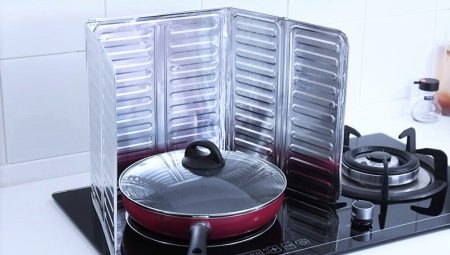
Cooking any food is accompanied by splashes on the hob, walls, sink and floor. To avoid this, you should use protective screens. By correctly navigating the varieties of these devices, you can choose the best option and greatly facilitate the cleaning of all surfaces in the kitchen.
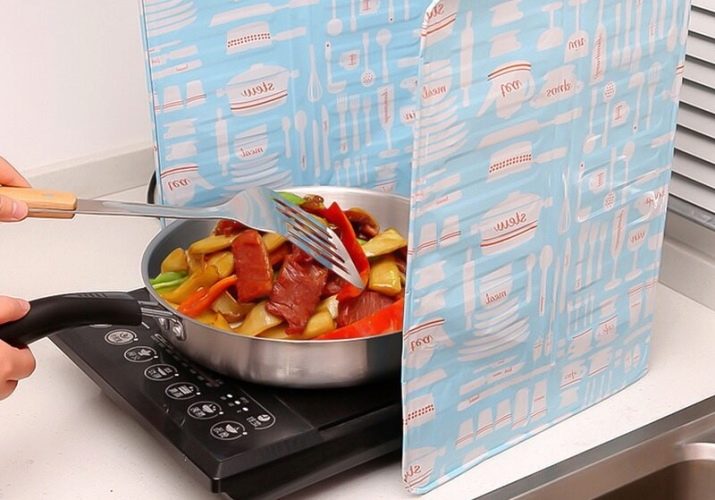
Requirements
The kitchen is a small room in which work is constantly boiling at the stove, which means that it cannot do without dirt. To make cleaning easier, the hostess can arrange an apron on the work wall or purchase a protective screen.
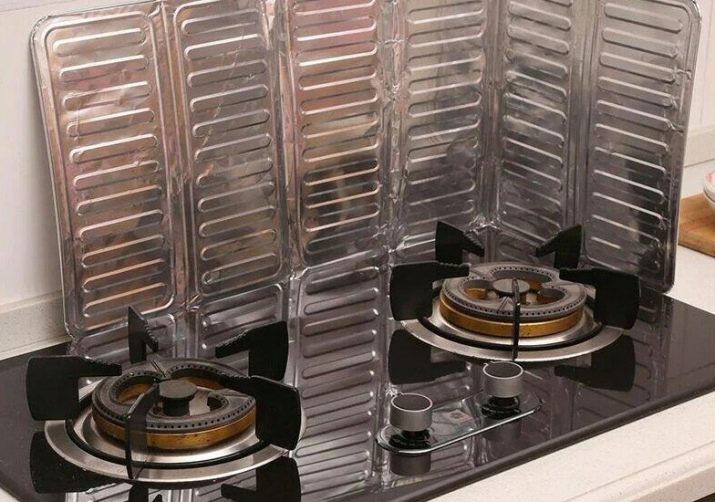
You can use such a device for electric stoves, gas varieties, infrared and glass-ceramic hobs.
The splash shield can be located directly next to the stove and cover the cooking area, or it can be located nearby, covering the entire wall or countertop from possible troubles during the cooking process. The stove shield can be made from a variety of materials, sizes and placement, but it should be good at protecting against oil splashes during frying or any other stains. In order not to be mistaken with the choice of a reliable protective screen, it is important to consider the product according to the key requirements:
- the product should easily tolerate sudden temperature changes, high humidity;
- the screen must withstand high and very high temperatures without problems;
- the product should be easy to wash and clean;
- the appearance of this screen should be pleasant, it should fit well into the interior and complement it.
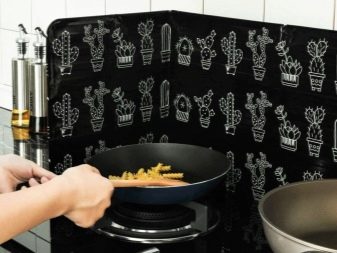

You can install protective screens in different positions:
- behind the burner - allows you to protect the wall from unwanted dirt during the cooking process;
- on the side of the burner - helps to protect the countertop or sink from splashes and stains;
- front of the stove - allows you to close the stove control panel and minimize access to the burners for children.
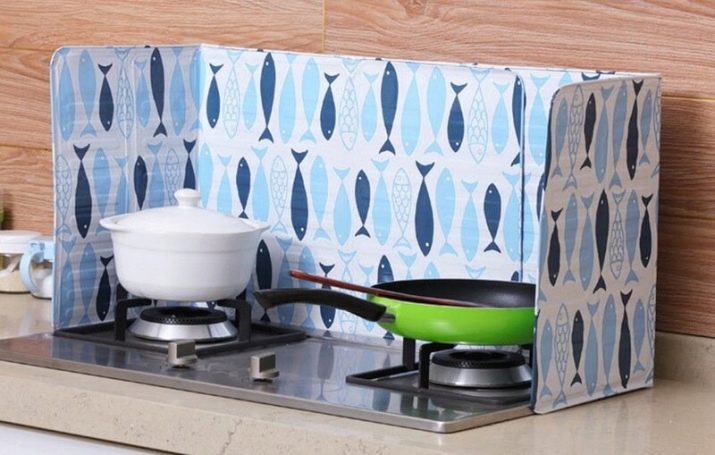
Among the wide variety of products, it is important to choose the one that suits the price, appearance and reliability.
Varieties
At the moment, there are 2 main types of such screens.
- Removable. It is a freestanding design made up of 2 or 3 pieces connected to each other, which are placed around the pot or pan, protecting everything else from any splashes.
- Monolithic. It is a solid sheet made of different materials that is placed on the kitchen wall to protect the wallpaper or backsplash. Depending on the reliability of the materials, such a screen can last from several weeks to several years.
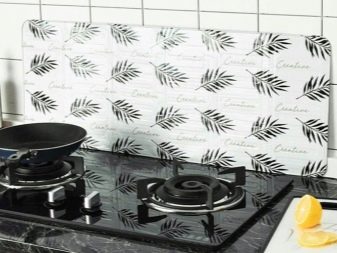
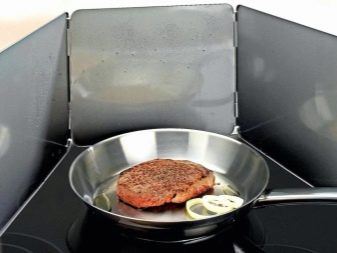
A detachable folding kitchen screen for a gas, electric stove or modern hob may look different, but it is made of foil. On sale you can find a simple version without drawings, or bright and beautiful varieties that not only protect the kitchen from unnecessary dirt, but also become an additional accessory. Such goods can consist of separate blocks, which are displayed in the right place, the number of elements can be from 2 to 8, depending on the size of the stove and its shape. To make it convenient for the hostess to transport the protective screen and wash it, there are varieties with a handle. Removable screens can be installed around or near the burner, protecting the stove itself from contamination.
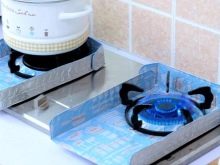
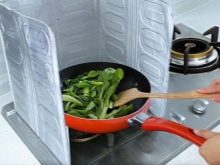
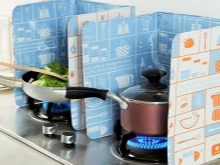
Monolithic protective screens can be made of different materials, which determines their reliability and cost. Such products are placed on the wall near the stove or on the work surface near the stove. Thanks to the stationary positioning of the accessory, there will be no need to put it on and off for every meal.
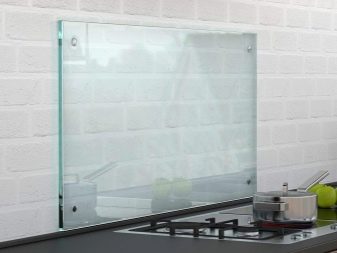
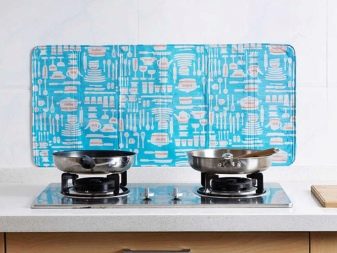
To wash such screens, it is enough to use a damp washcloth and soap.
Manufacturing materials
When choosing a protective screen, it is important to understand exactly how it will be used, how often and what tasks it faces. The main distinguishing feature of such products is the material of their creation. Monolithic screens are installed in their place and used as long as they can perform their functions. There are several basic materials from which such screens can be made.
- MDF. Any wooden surface does not tolerate moisture and exposure to high temperatures, therefore such products are covered with a special protective film. The cost of this screen is not too high, its service life is 3-5 years. There are various options for such screens. MDF with PVC film is an externally beautiful, but unpractical option, since the coating does not withstand high temperatures. MDF with a film coated with acrylic resin is the most successful version of the screen, which has a pleasant appearance and provides adequate protection.
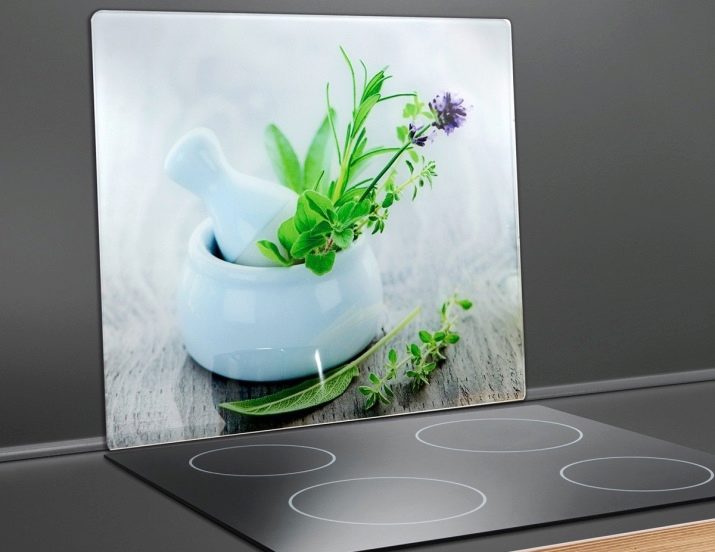
- Strained glass. Used to protect walls and work area from contamination. The glass screen is at least 8 mm thick, durable and practical, looks good in the kitchen and can be decorated with a pattern if desired. The disadvantage of this option is the high cost and the need to order a product for a certain size of the kitchen.
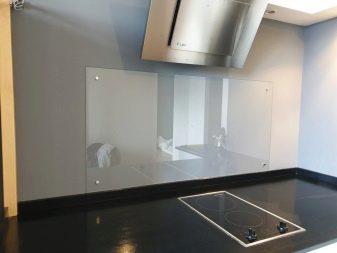
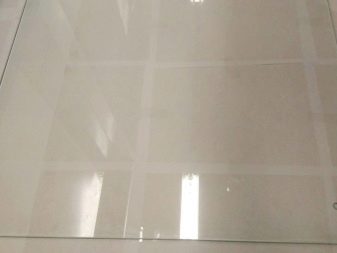
- Polycarbonate - an artificial material that looks like glass, but has much more advantages. Due to the lightness of the material and simple processing, you can make a protective screen with your own hands. Polycarbonate can withstand high temperatures, which allows it to be safely placed behind the stove.
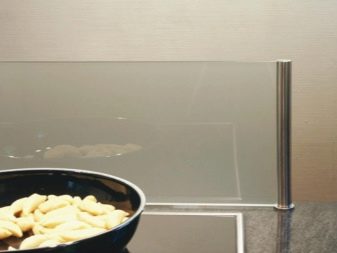

Due to its high strength, it is possible to care for the surface using any household chemicals and aids.
- Stone. The use of porcelain stoneware slabs on the wall has its advantages and disadvantages. The stone finish of the working area looks very beautiful and stylish, which is a plus, porcelain stoneware is cheaper than protective glass.Of the minuses, one can note the large weight of the slab, the roughness of the surface, which complicates maintenance. Such hobs should not be installed close to the burners, as they can only withstand heating up to 80º.
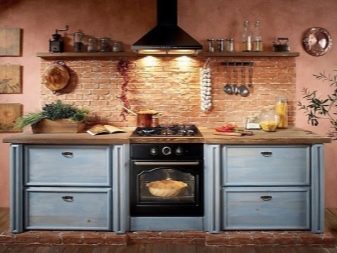
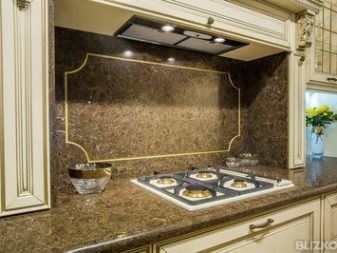
- Plastic. Panels that look like glass, but have a greater variety of colors, are lightweight and easy to install. They can be placed in front of wallpaper, paint or any other surface, the screen will fully protect it.
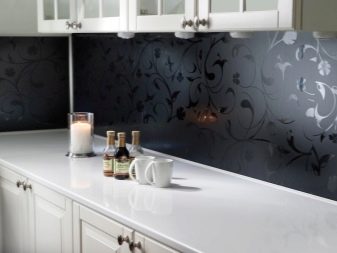

- PVC panels can have different thicknesses, be located on the wall in the form of one part, or overlap each other, like lining, which allows you to change the part that will suffer over time. These panels are the most budgetary, but not durable, they melt from high temperatures, they can swell from water.
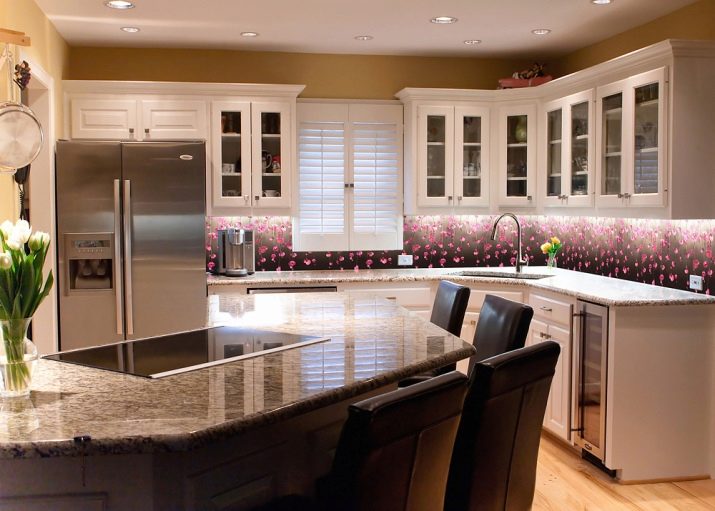
- Metal. The surface of the wall can be protected with steel plates that prevent splashes and grease from entering the surface. The metal is able to withstand heating to high temperatures, which is an advantage of this material, but otherwise it is of little practical use. Drops, dirt and grease remain on metal panels and are not easy to clean.
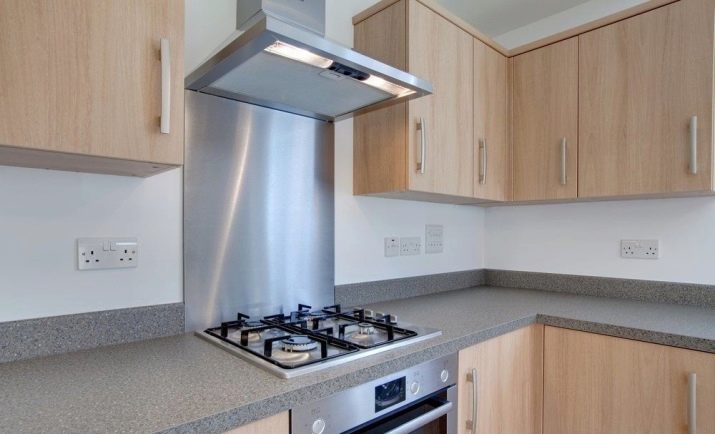
Due to the small thickness of the product, it can deform and spoil the appearance of the entire kitchen.
- Some housewives use a silicone protective screenthat can be fixed to the wall with liquid nails.

If you don't want to install a stationary product on the kitchen wall, then you can use removable screens. Most often, such products are created from foil, they can easily withstand high temperature, humidity and dirt, which can be removed without any problems with detergents. Such screens can be decorative or not. The cost of this product is low, and if you wish or if necessary, you can easily purchase a new protective screen.
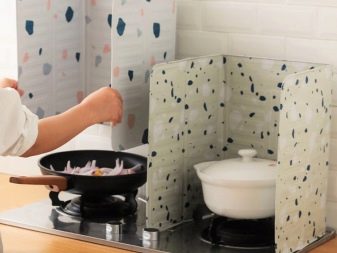
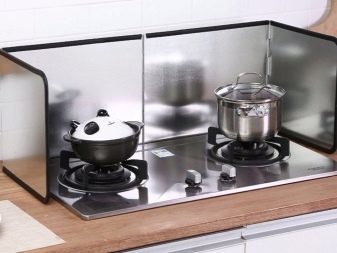
Selection Tips
To buy a good protective screen for the kitchen, you need to decide on the important points.
- Monolithic screen size. It must completely protect the area where the cooking process takes place.
- Removable options should cover any kitchen utensil so you don't have to buy a pot and pan item separately.
- Thermal conductivity. Materials must withstand high temperatures and not be flammable.
- Water resistance. The protective screen must not absorb moisture or deform from it.
- The beautiful appearance of the screen should complement the interior of the kitchen, decorate it, and not overload it.
- The surface should be easy to clean.
- The cost should be adequate, you can pay decent money for high-quality and wear-resistant material, but short-lived goods are not worth such a waste.
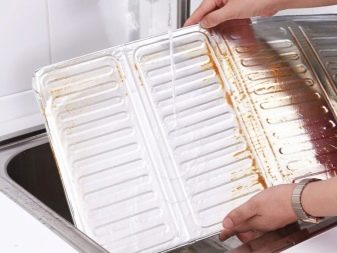
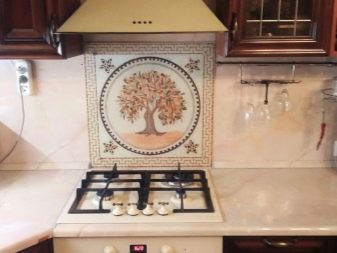
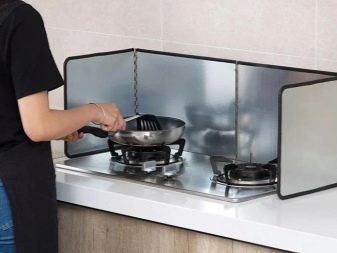
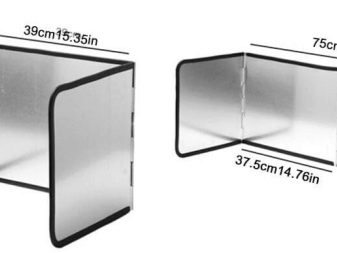
You need to choose a protective screen slowly, thinking over all the nuances and weighing the advantages and disadvantages of each option.








